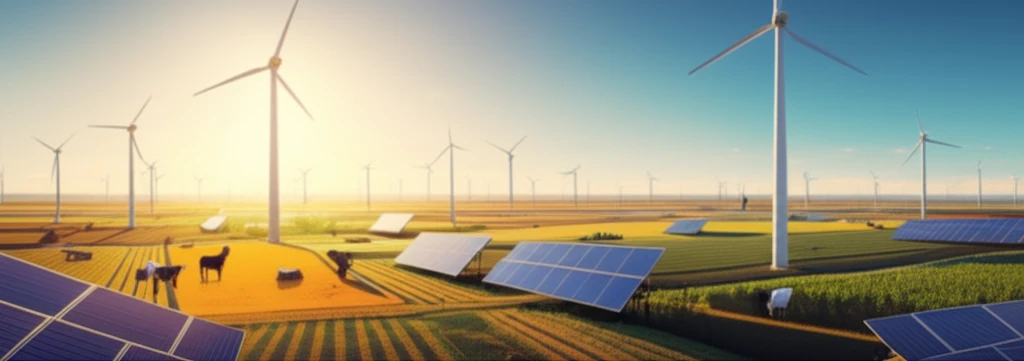
Powering the Future: Can Renewable Energy Goals Be Met on Converted Lands?
"A new study reveals the potential of using already-impacted areas for renewable energy, balancing climate action with conservation."
The global community is committed to tackling climate change, expanding energy access, and protecting biodiversity. The Paris Agreement and the UN Sustainable Development Goals (SDGs) demonstrate this commitment, setting ambitious targets for reducing emissions and increasing renewable energy adoption. However, achieving these goals requires careful planning, particularly regarding land use.
Renewable energy projects, while essential for decarbonization, often have a significant land footprint. This can lead to conflicts with the conservation of natural lands, which are vital for biodiversity and carbon storage. It's a delicate balance: expanding renewable energy sources while minimizing environmental impact.
A recent study investigated whether converted lands—areas already impacted by human activities like agriculture and settlements—can meet renewable energy targets derived from the Paris Agreement. This approach could potentially minimize the conflict between energy development and nature conservation, paving the way for more sustainable implementation of global climate goals.
Unlocking Renewable Energy Potential on Converted Lands

The study converted emission reduction commitments submitted as part of the Paris Agreement into actionable energy targets. Researchers then assessed whether these targets could be met by developing wind, solar, and hydropower on converted lands and waters, which typically have lower biodiversity and carbon value than pristine natural areas.
- Wind Energy: Harnessing wind power on converted lands offers substantial potential for clean energy generation.
- Solar Power: Utilizing solar technologies on already developed sites can significantly contribute to renewable energy targets.
- Hydropower: Retrofitting or repurposing existing dams can boost hydropower generation without further disrupting natural river systems.
A Sustainable Path Forward
Guiding renewable energy development to converted lands presents significant opportunities for sustainable development. However, it requires proactive planning and incentives to ensure expansion doesn't exacerbate other environmental challenges.
Targeting subsidies to favor low-impact developments and implementing mitigation requirements for projects impacting natural lands are crucial steps. These measures can steer renewable energy development towards already-impacted areas, reducing the risk to biodiversity and carbon storage.
Failure to prioritize sustainable siting could undermine progress towards achieving the commitments of the Paris Agreement and the SDGs. By embracing careful planning and responsible land management, we can unlock the full potential of renewable energy while safeguarding our planet's precious natural resources.
